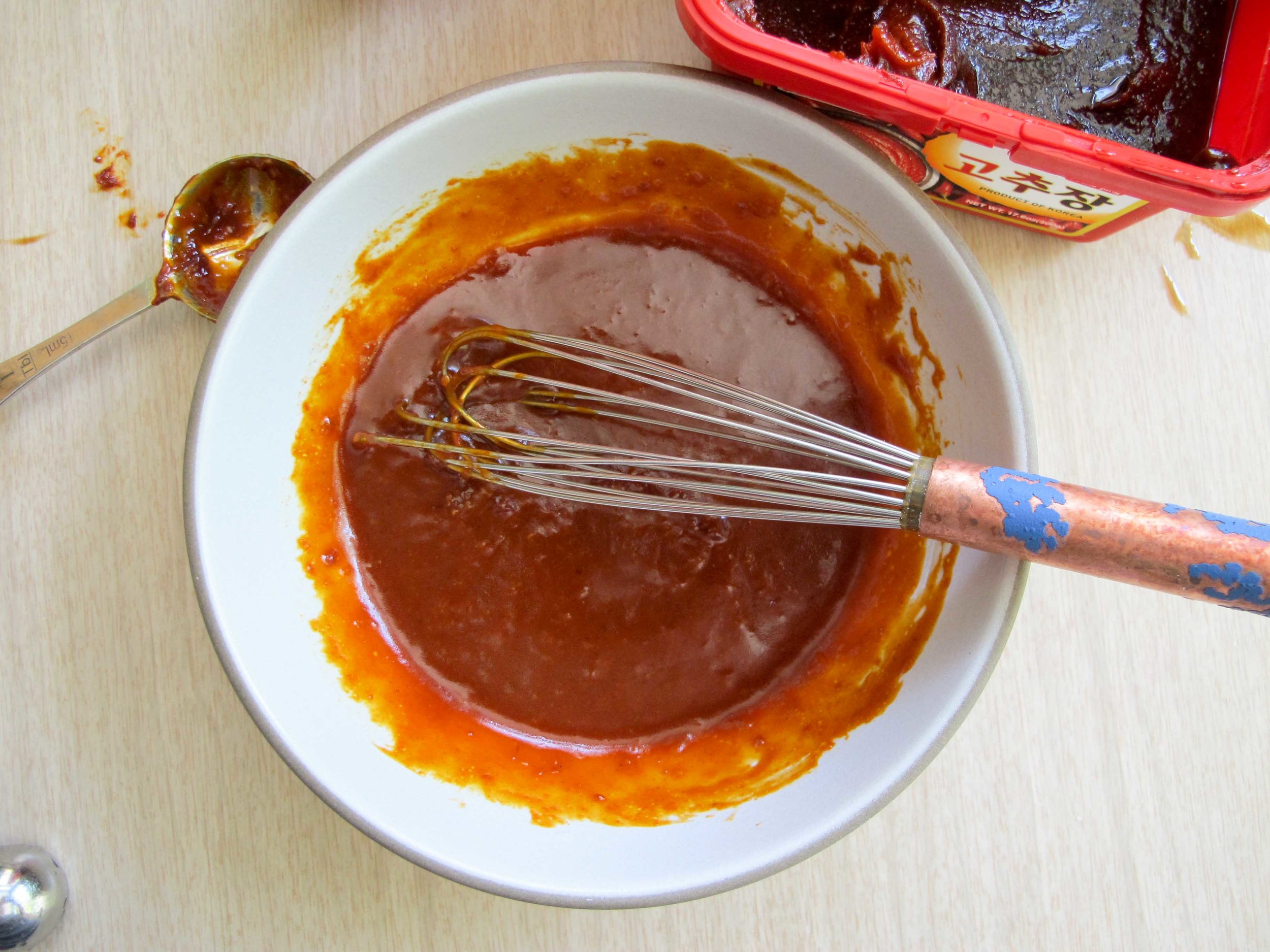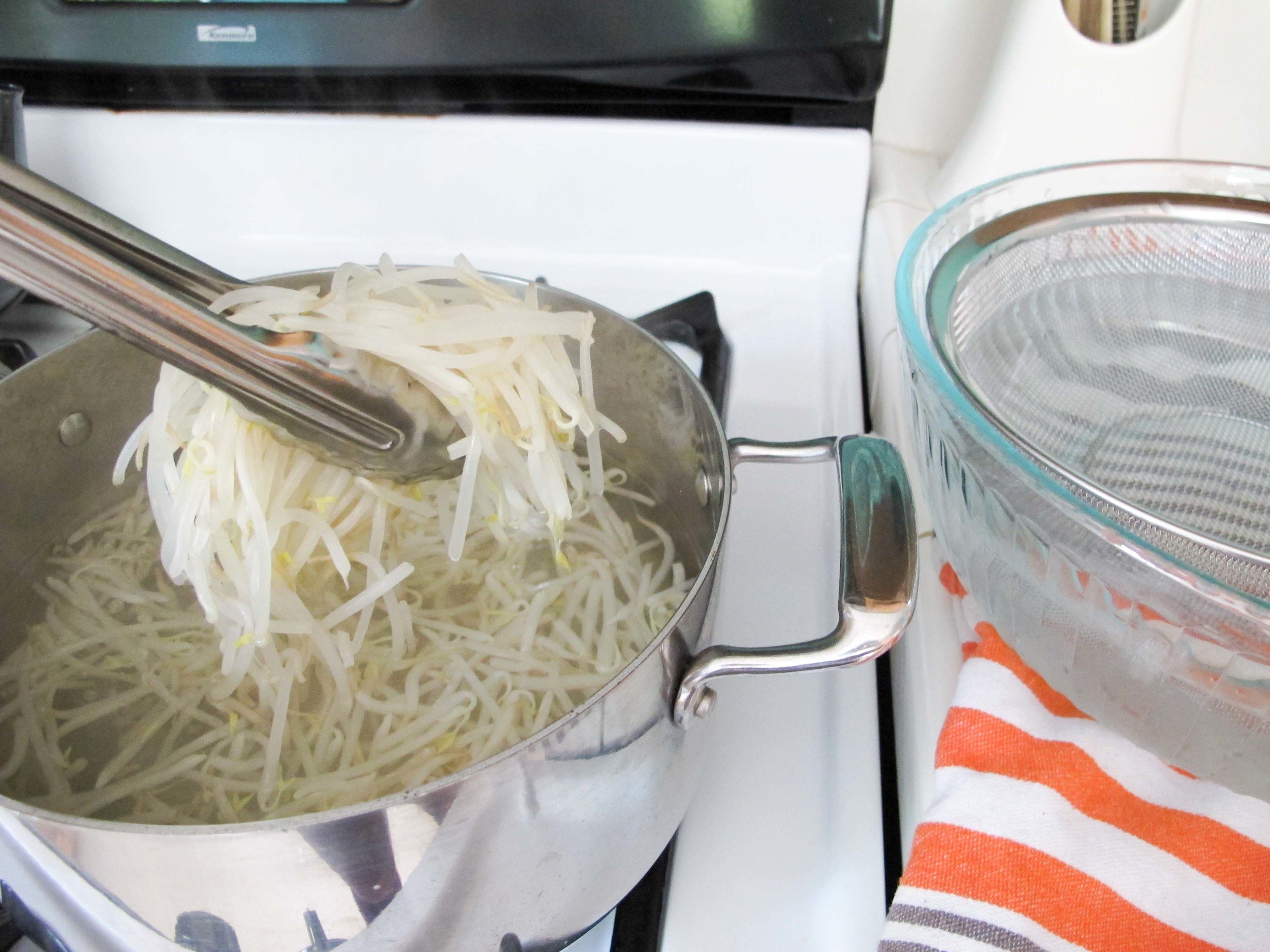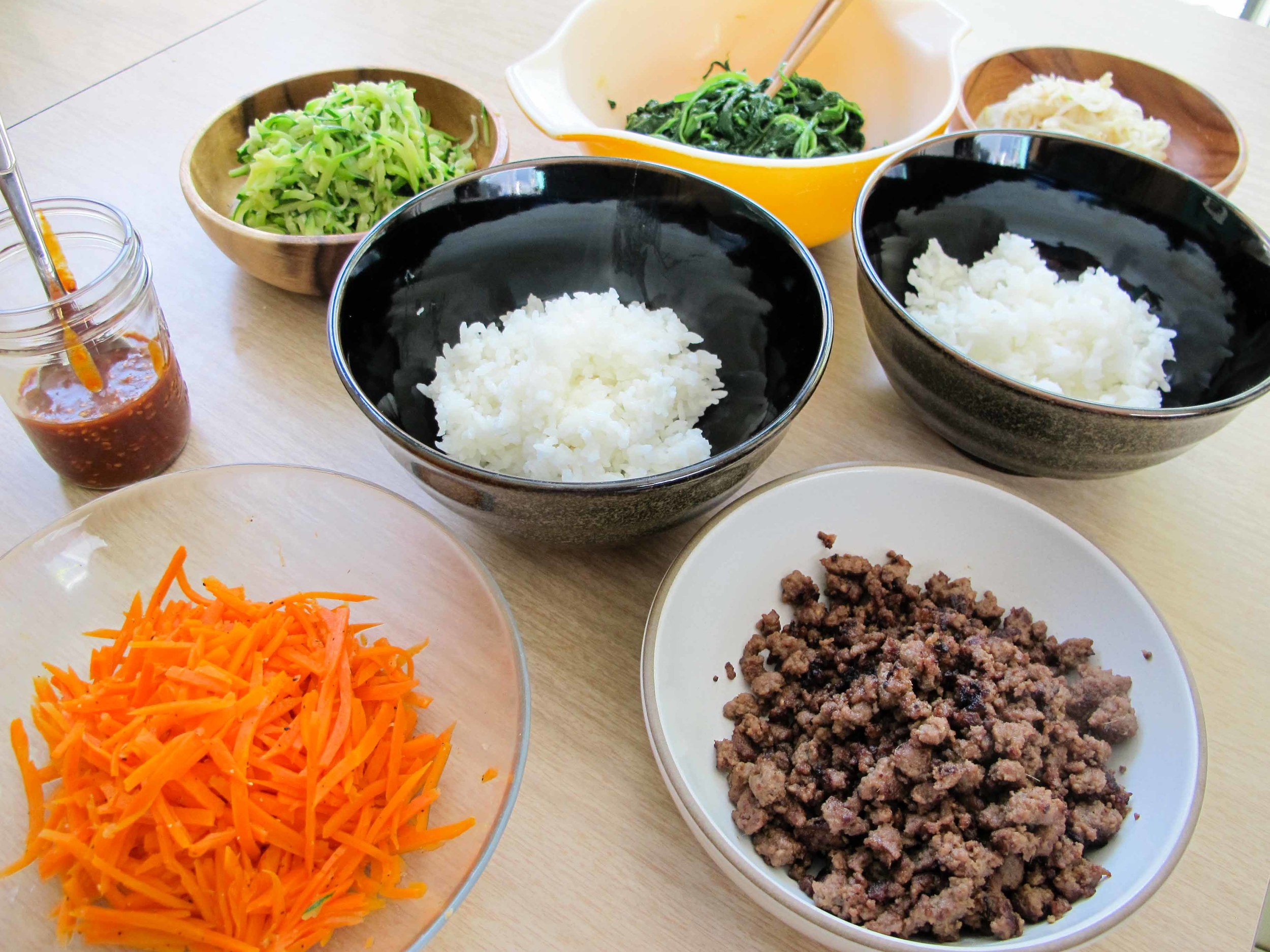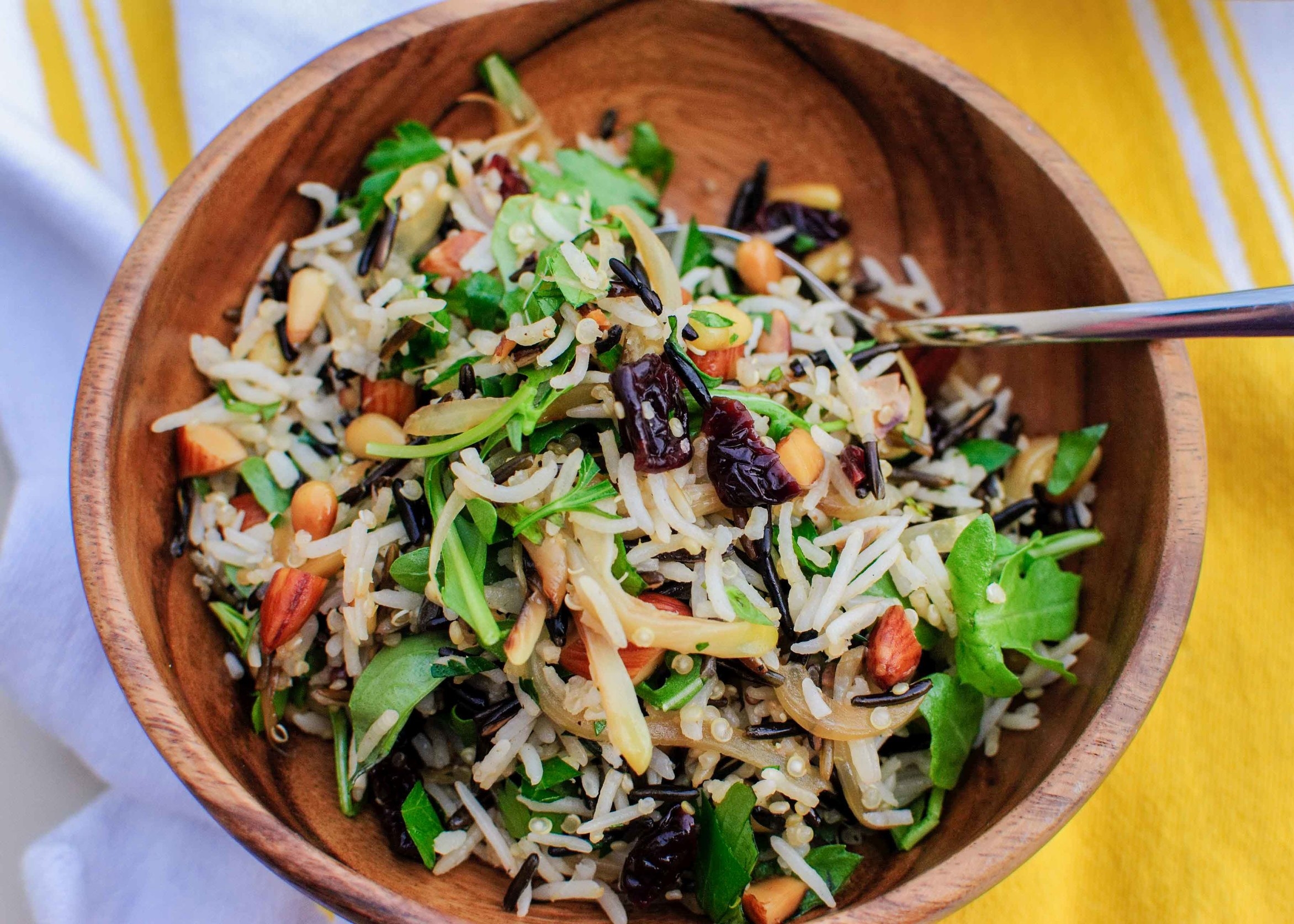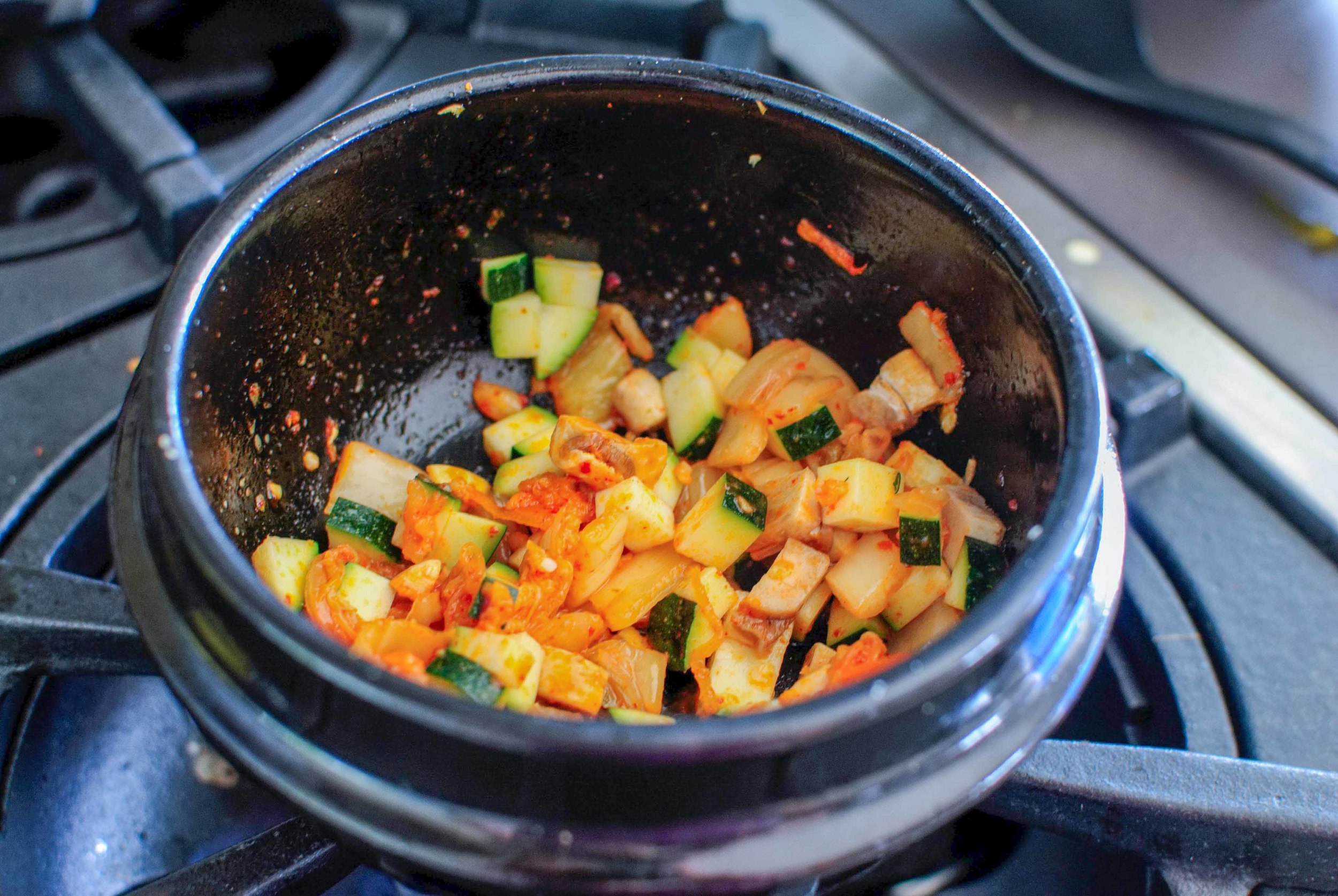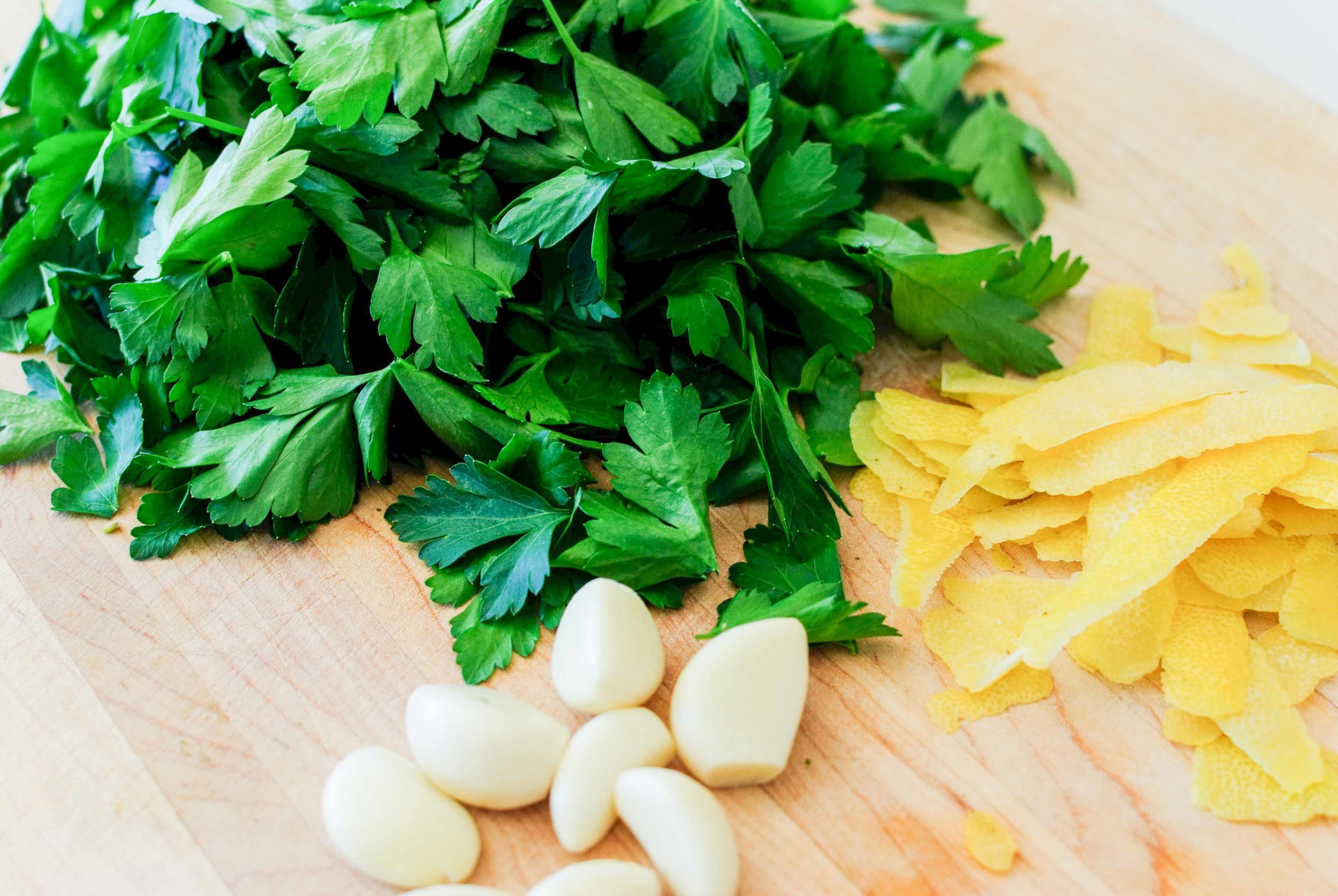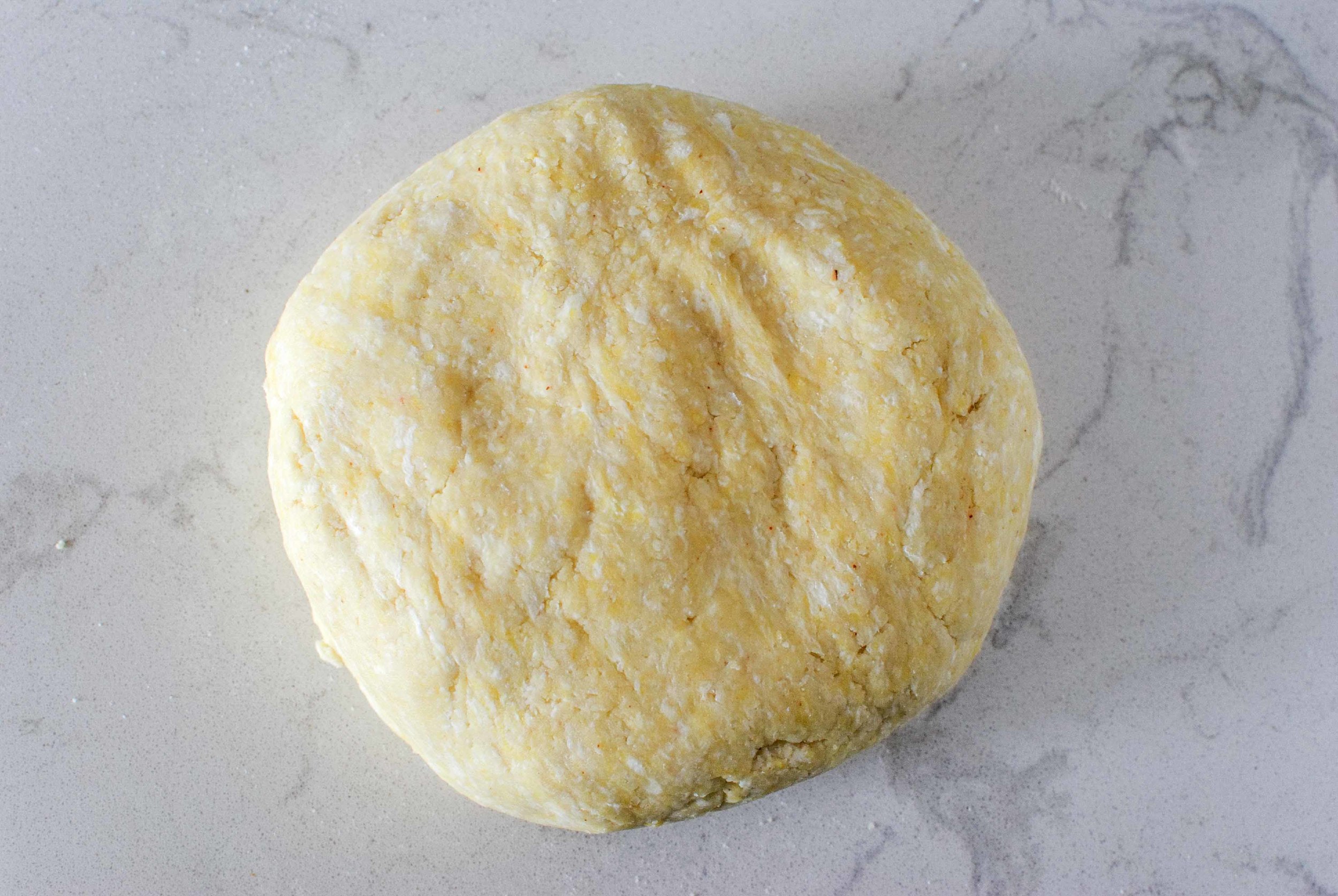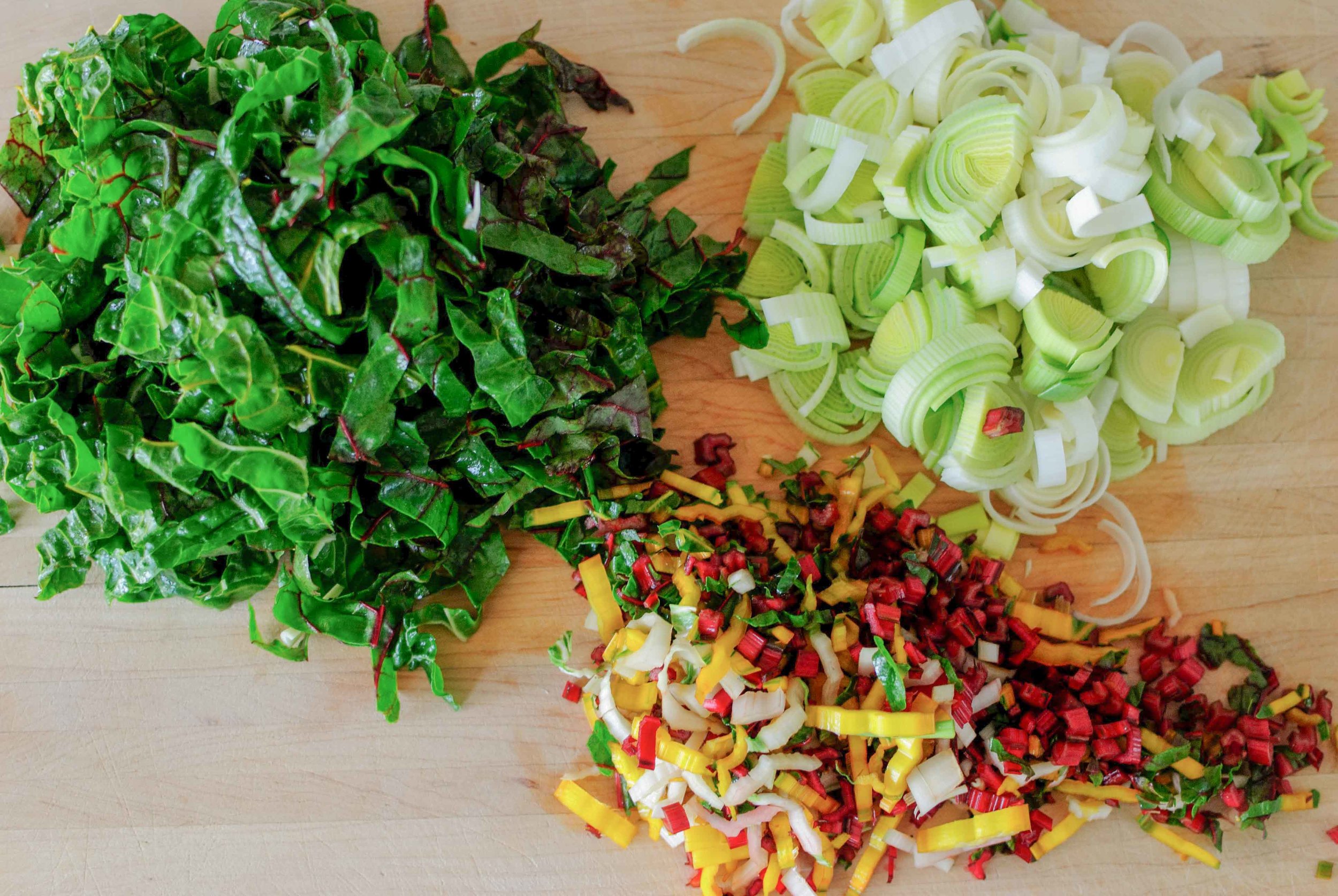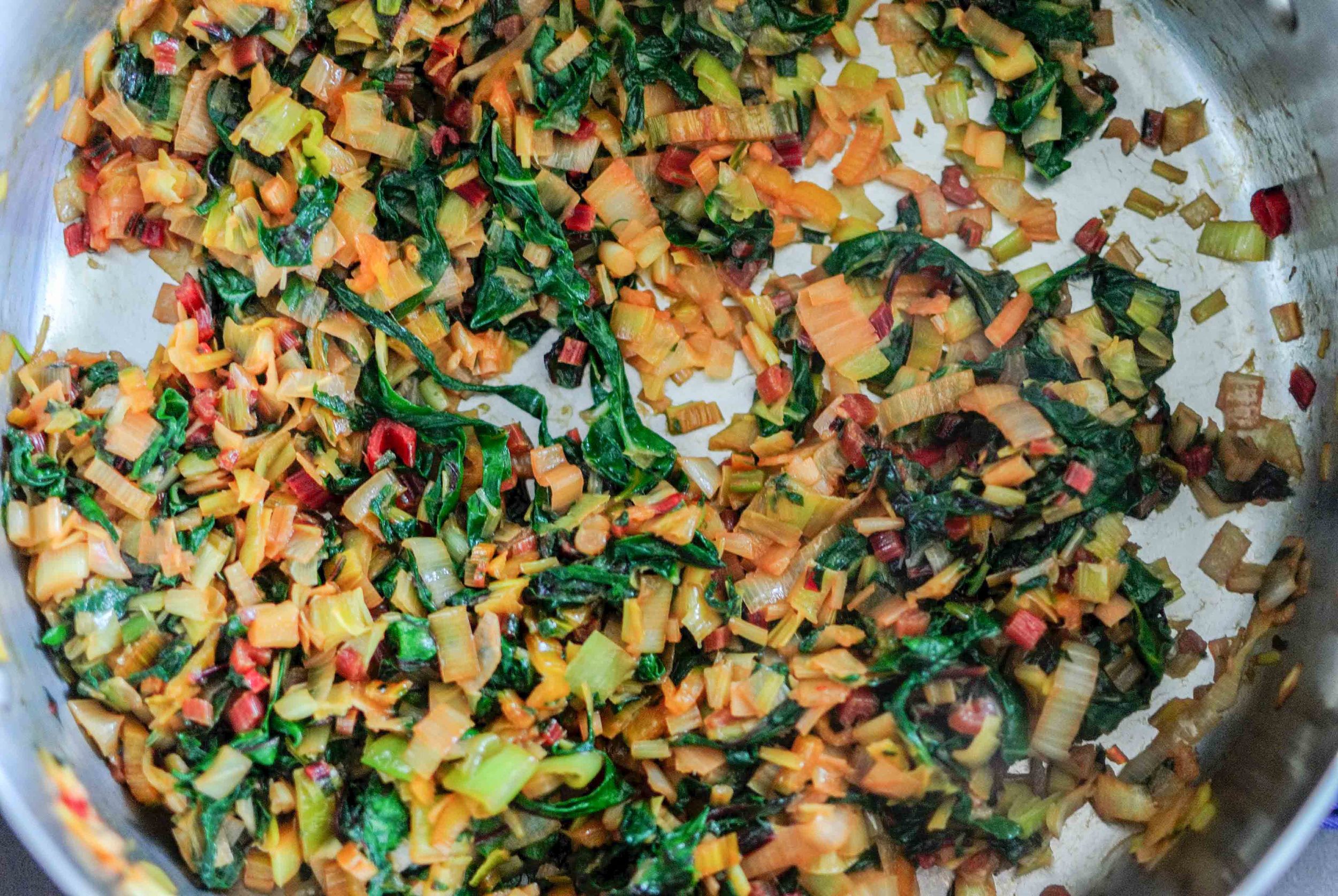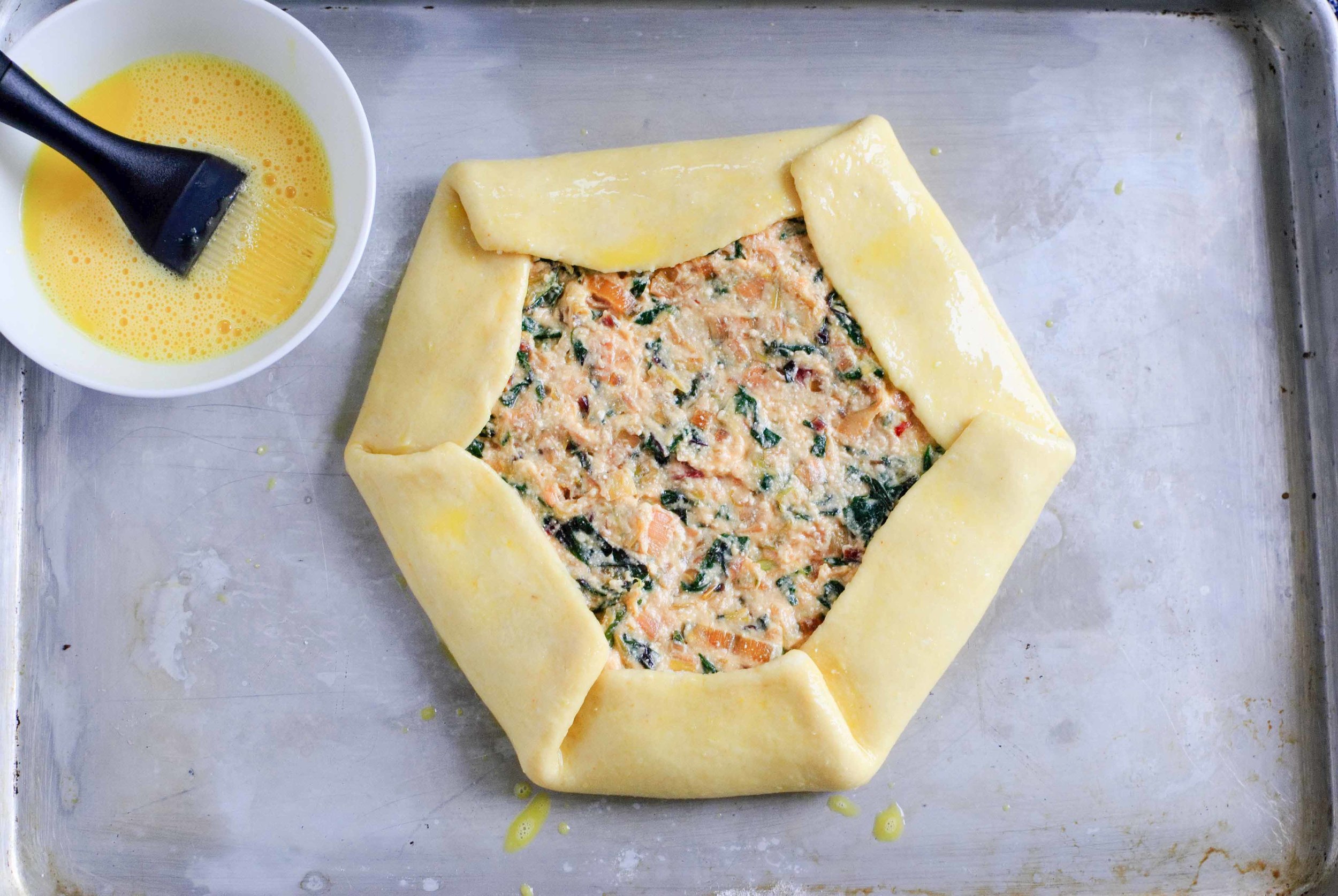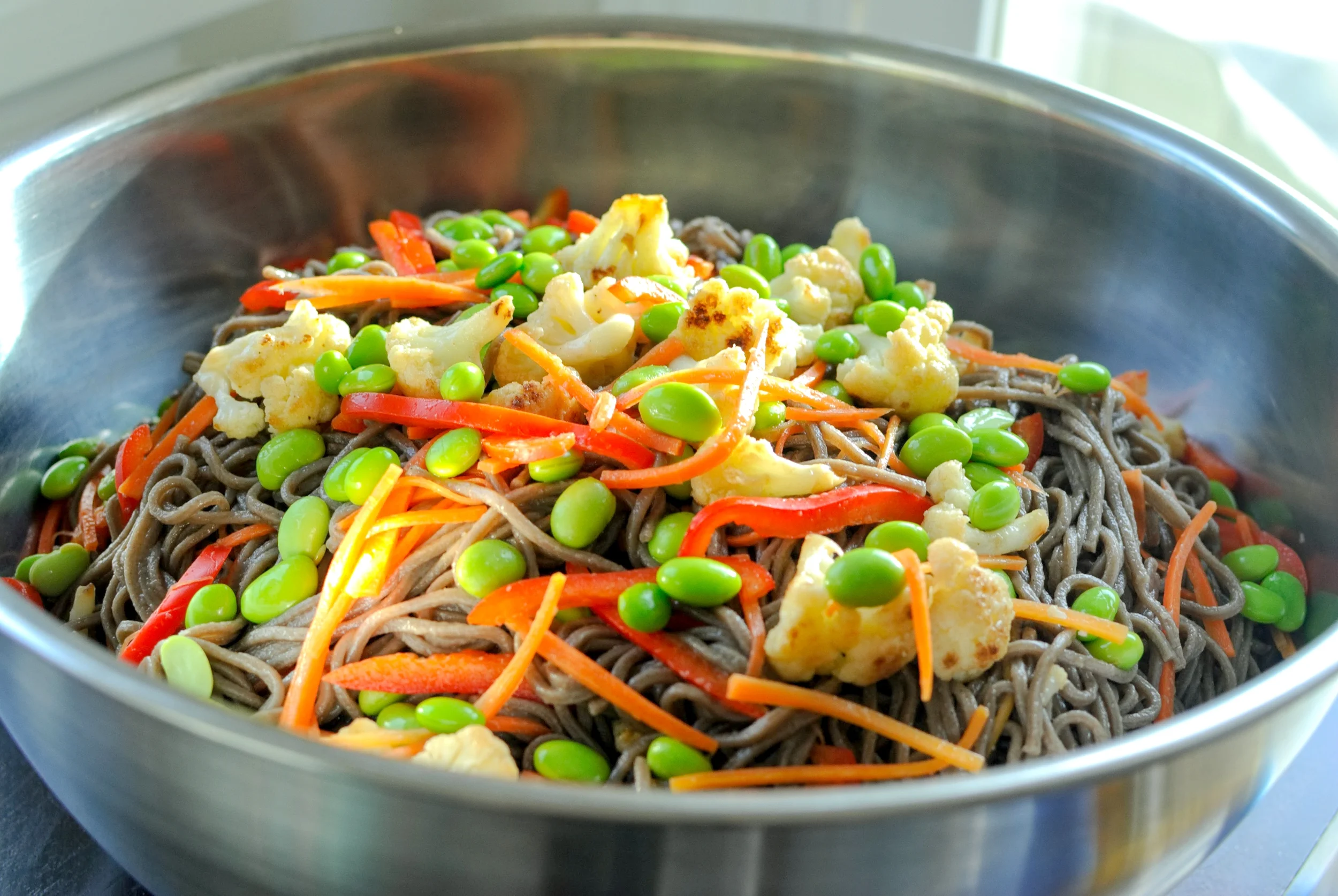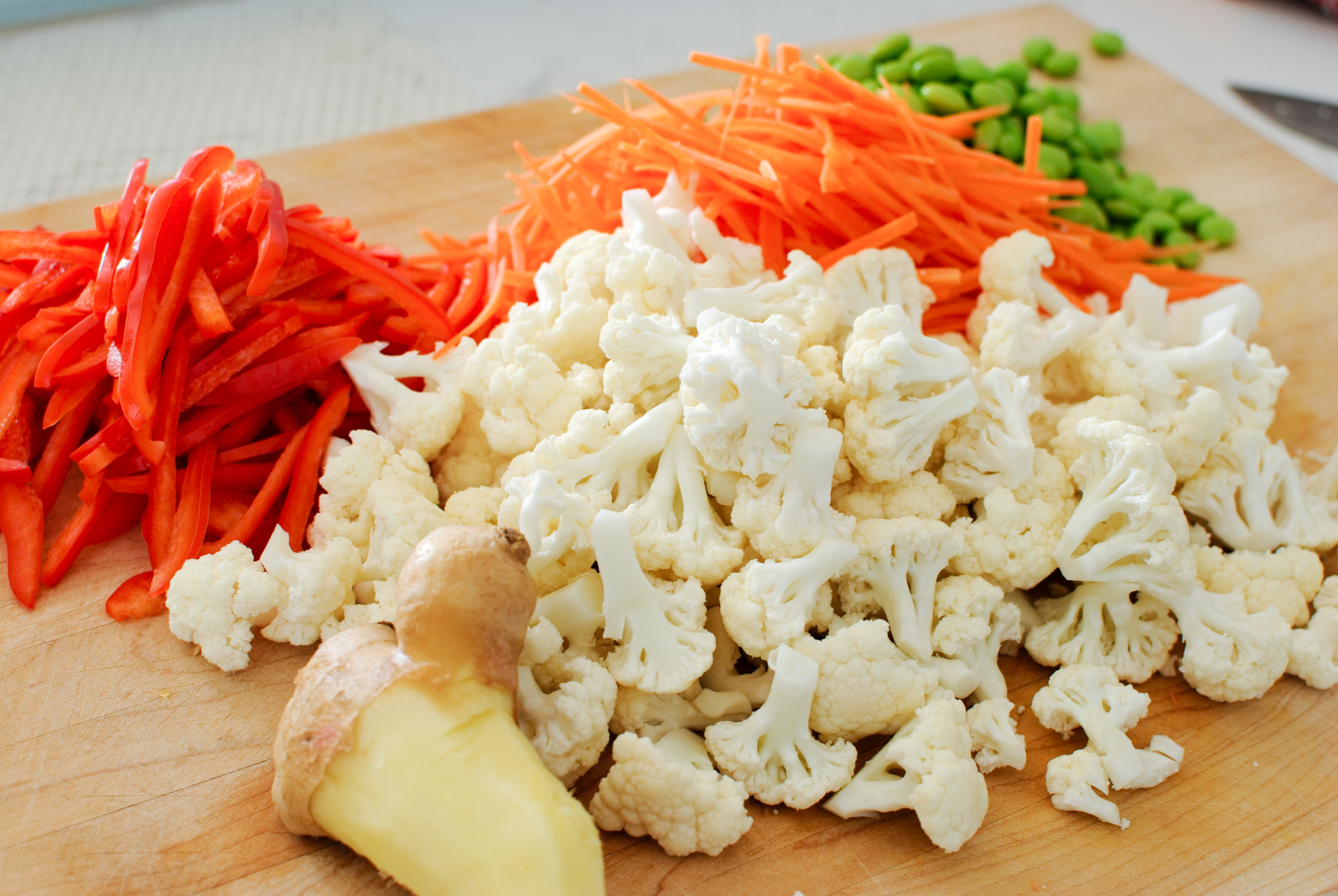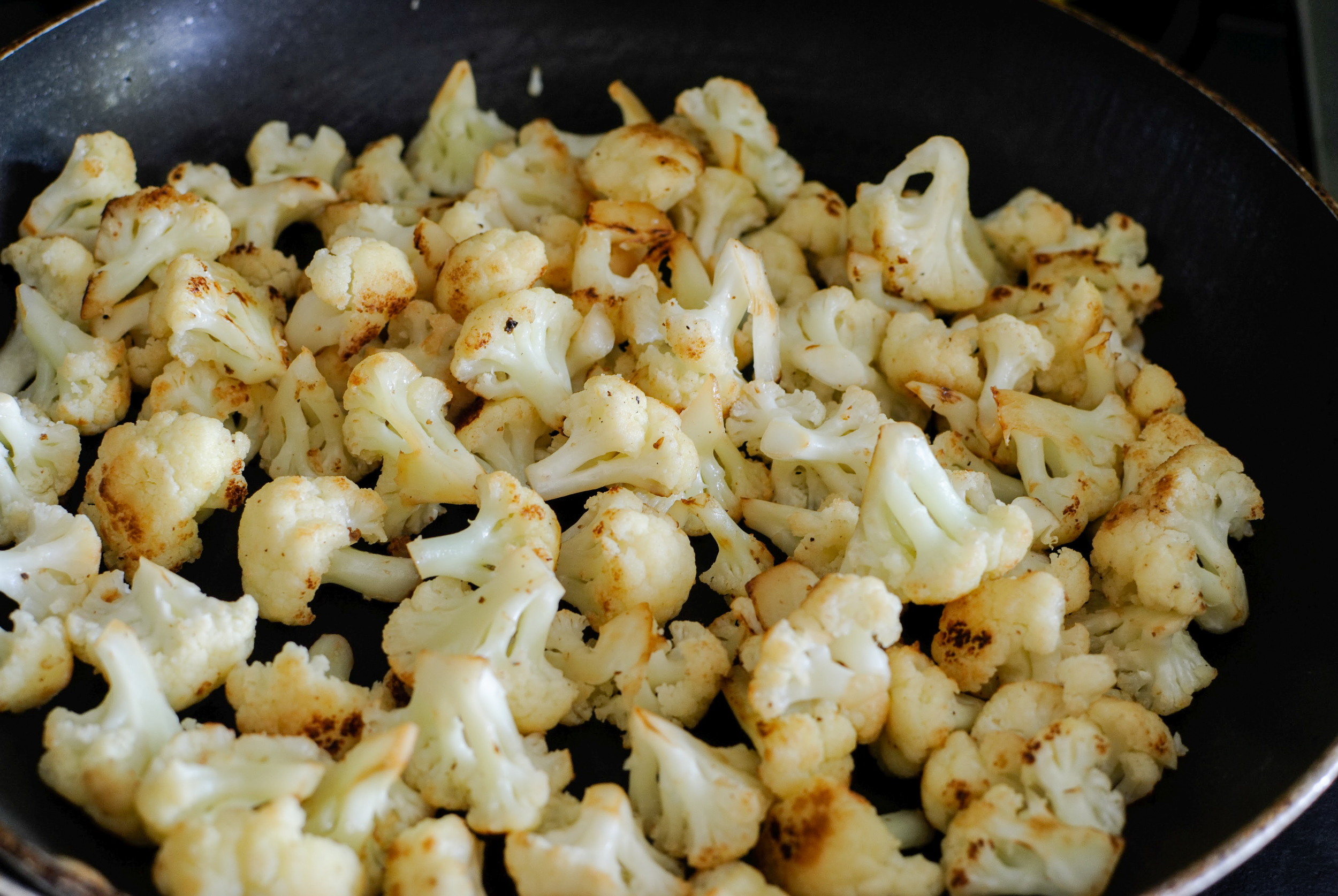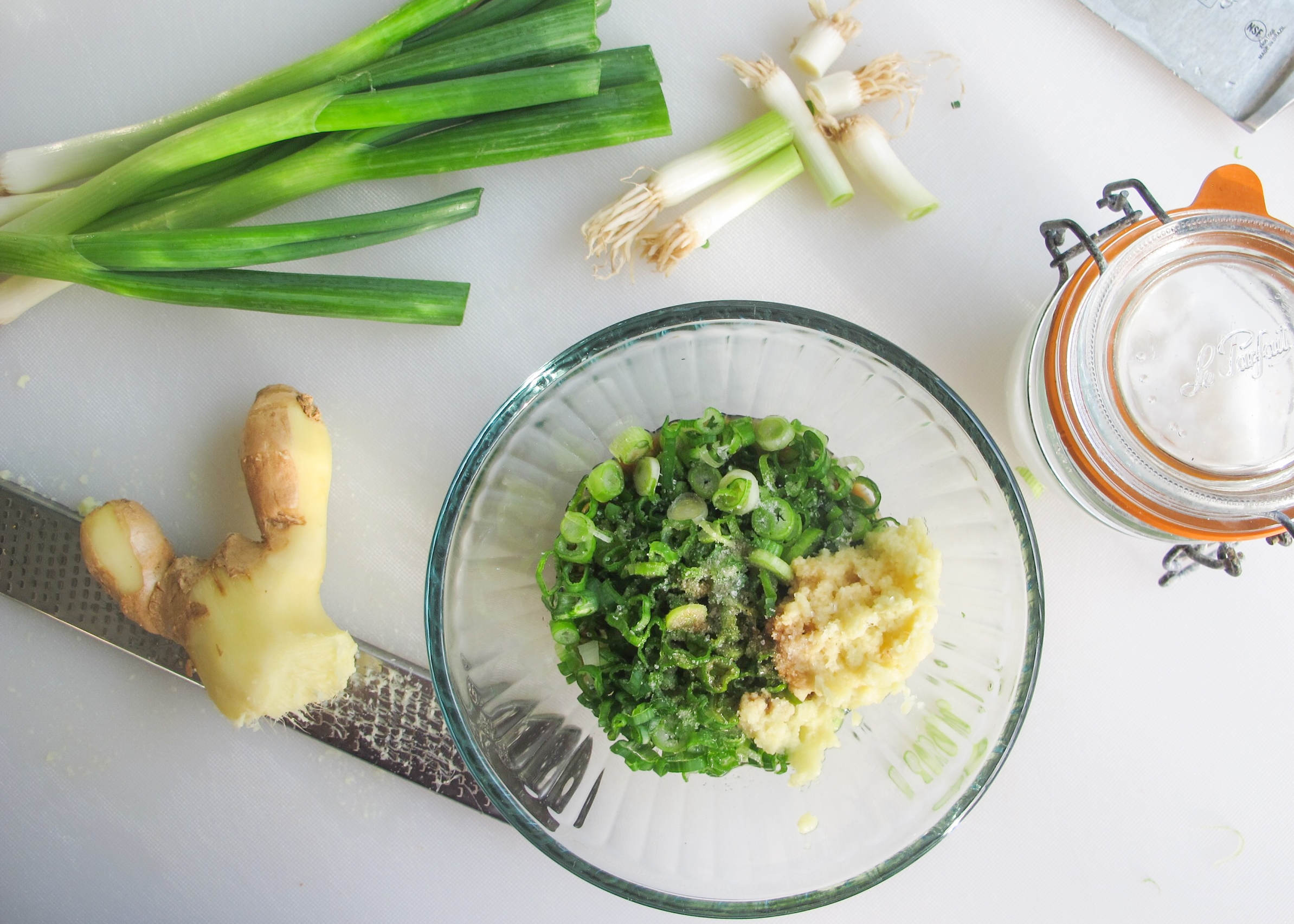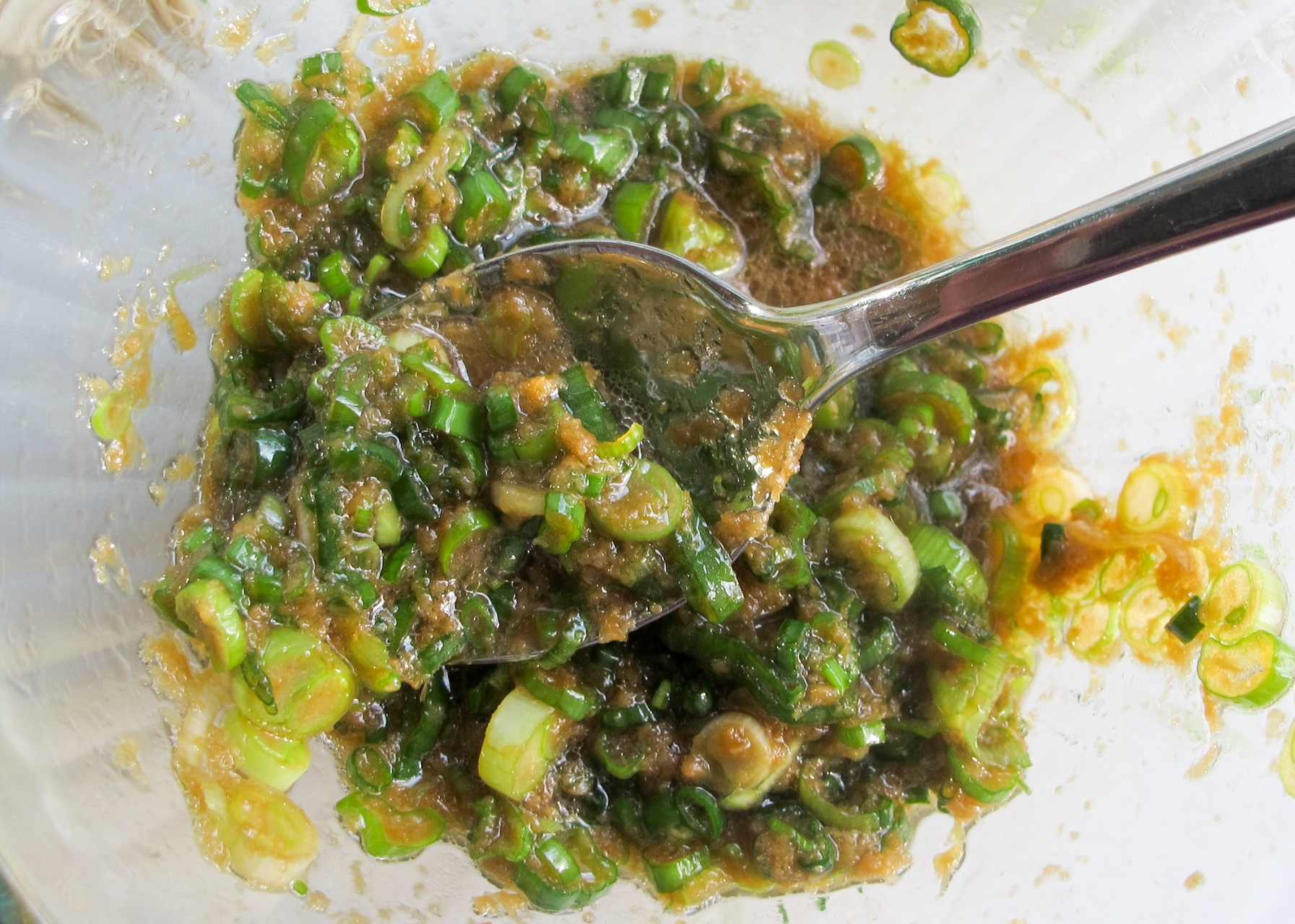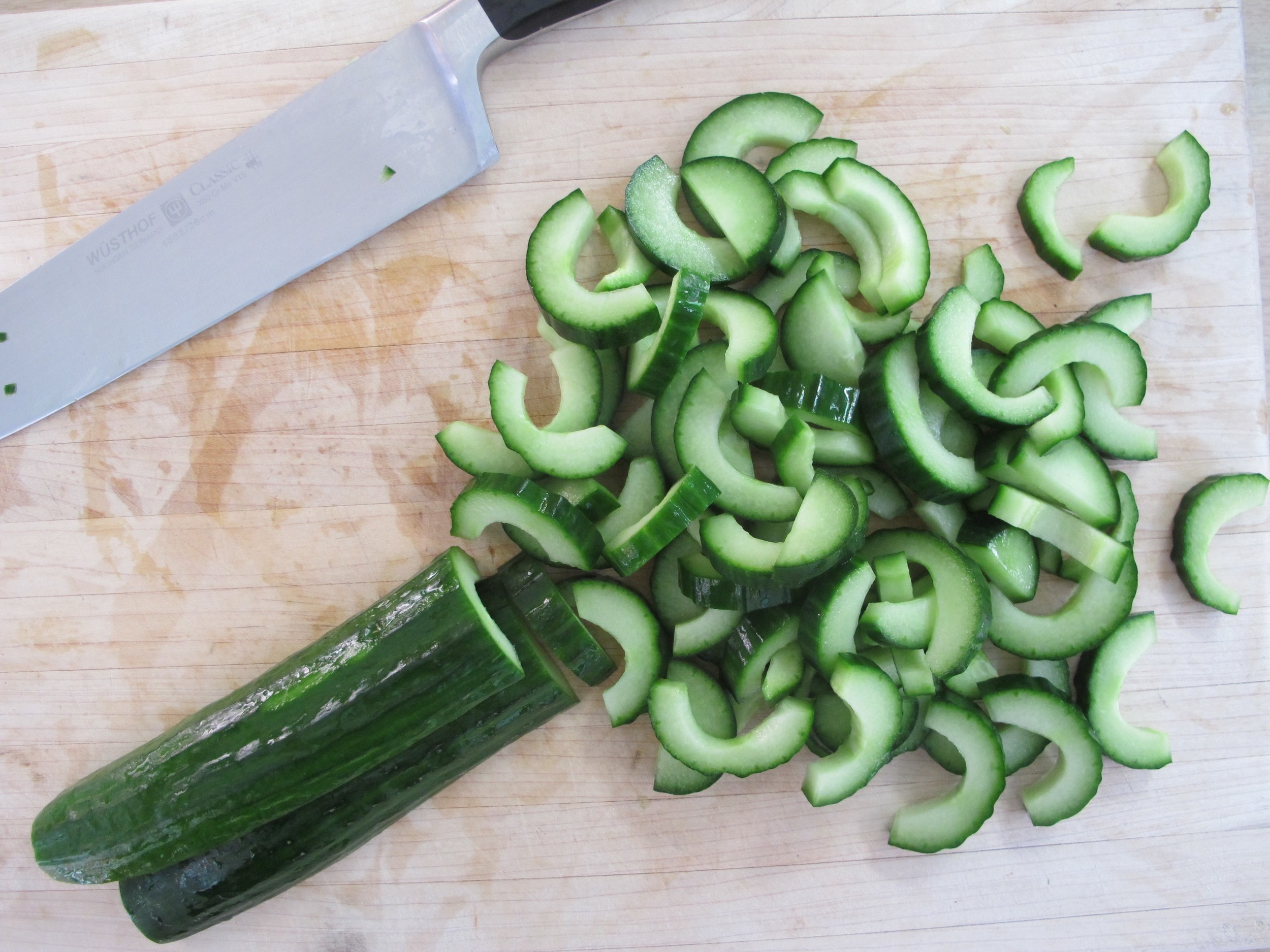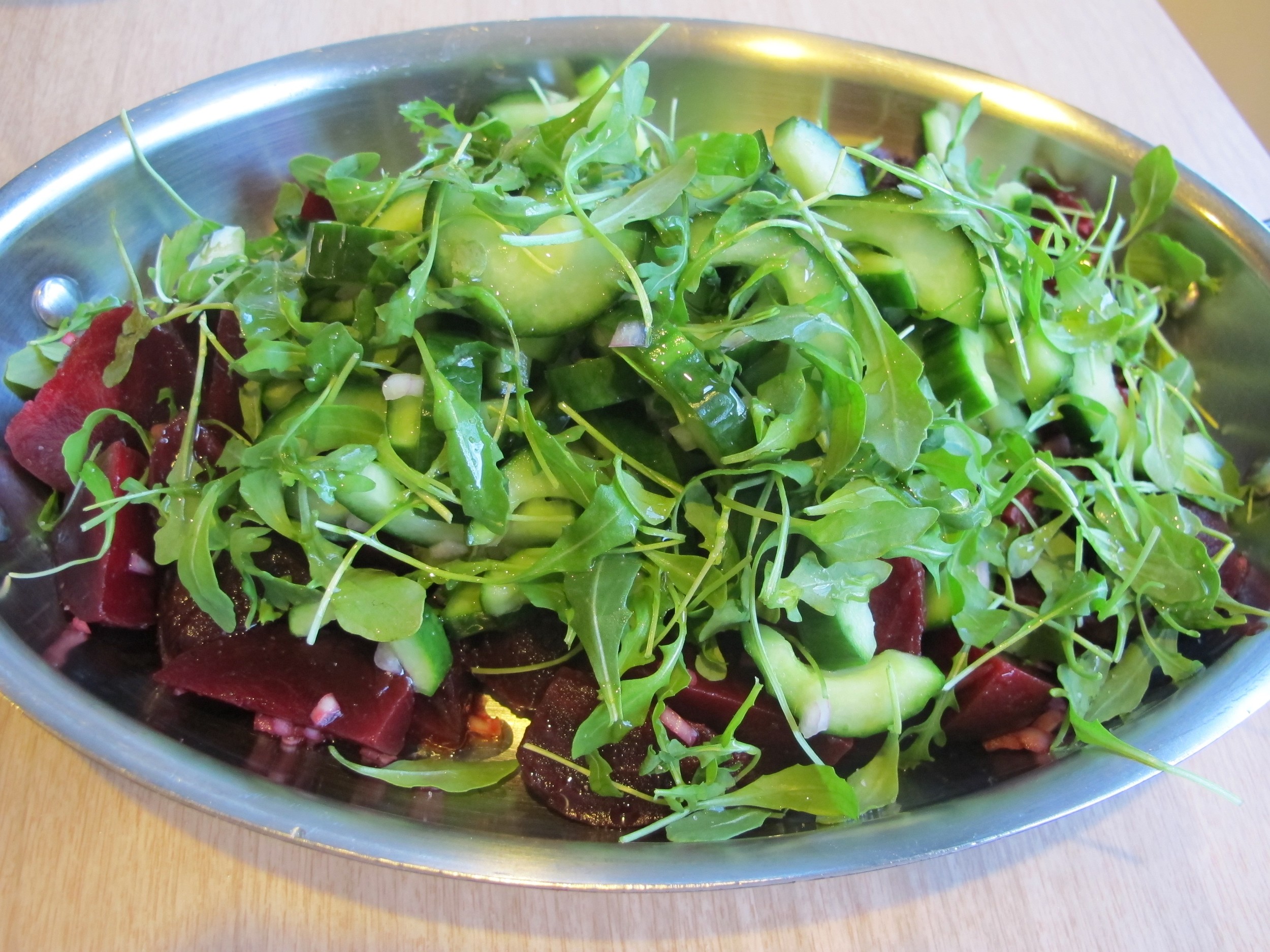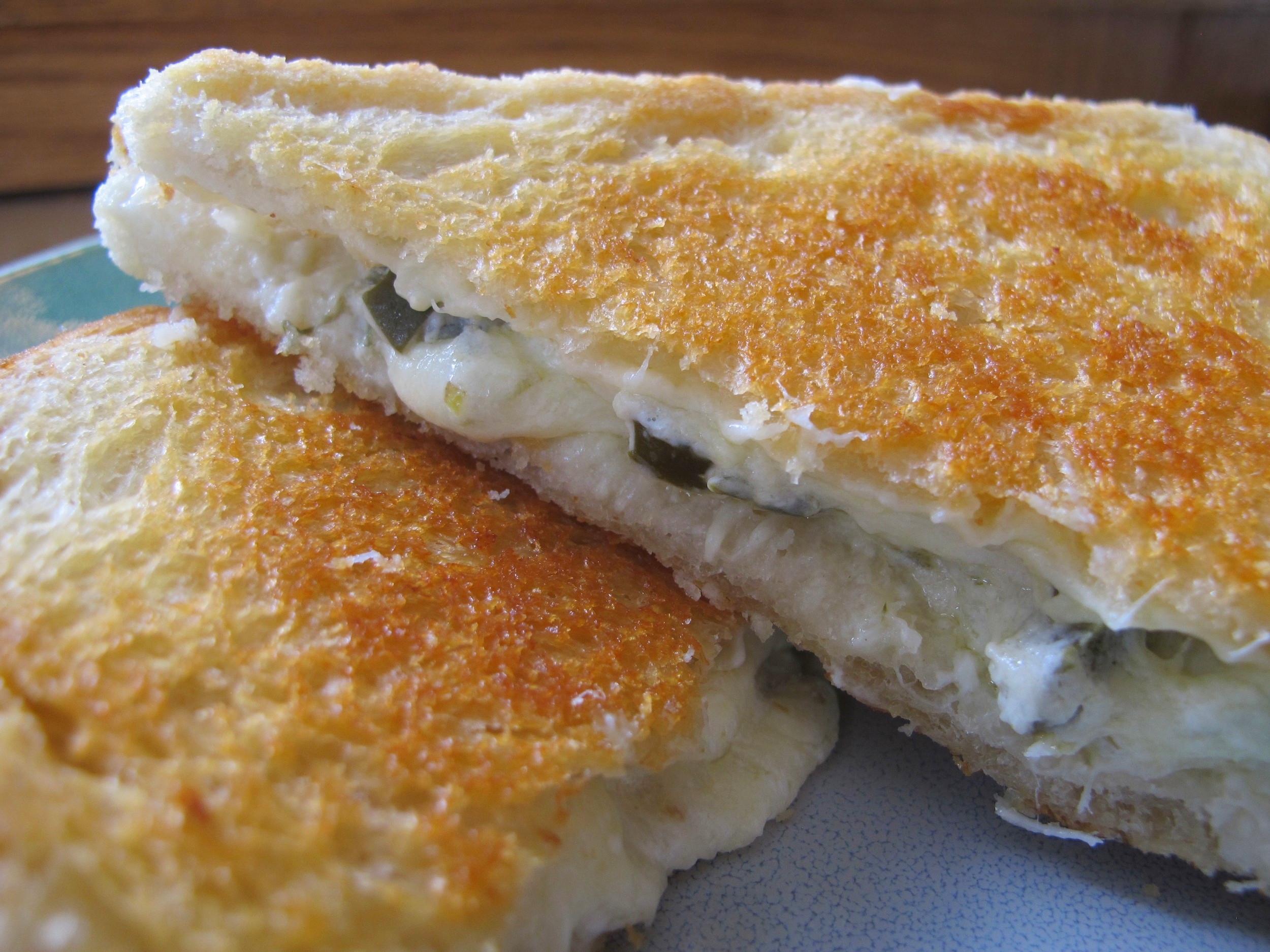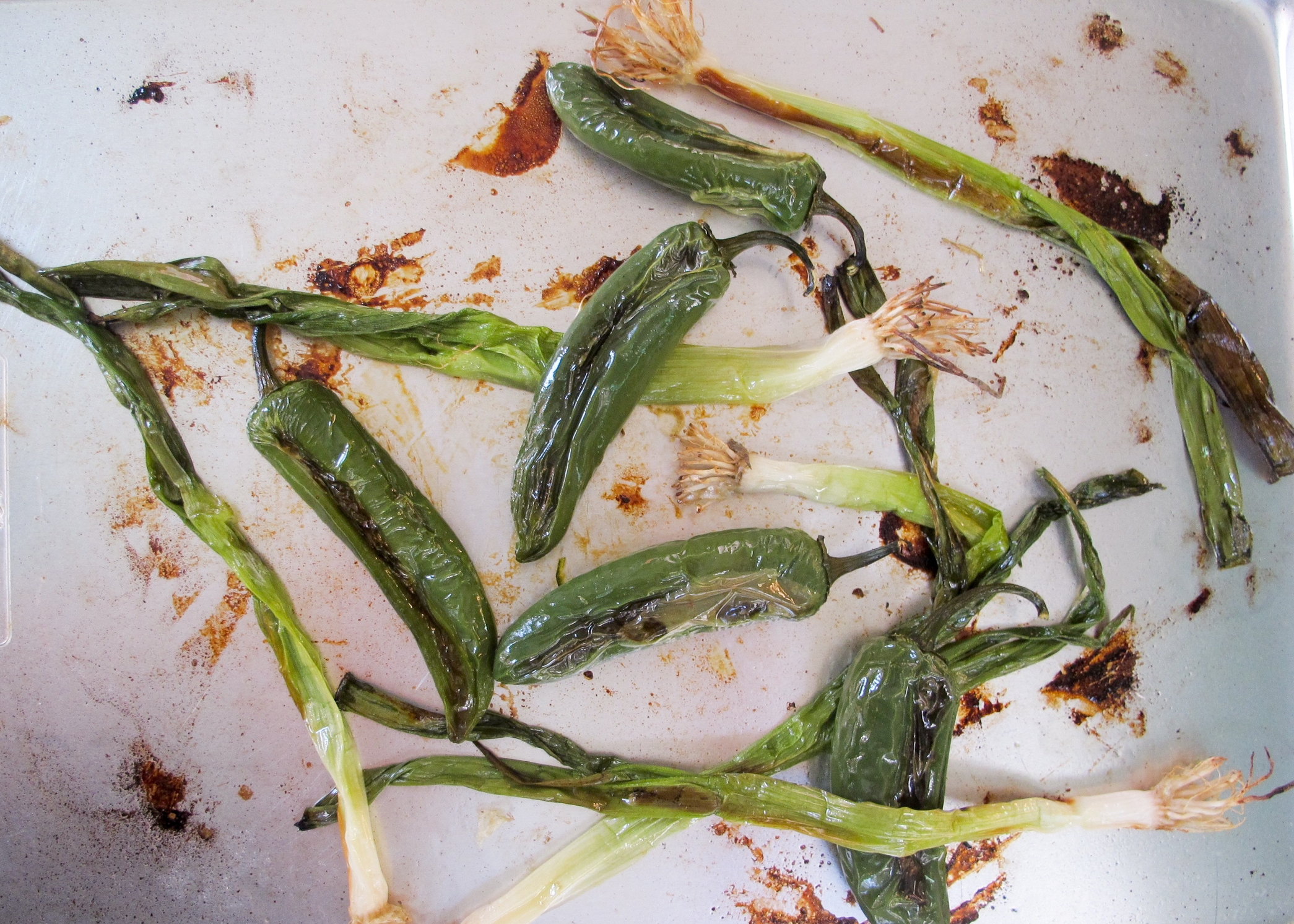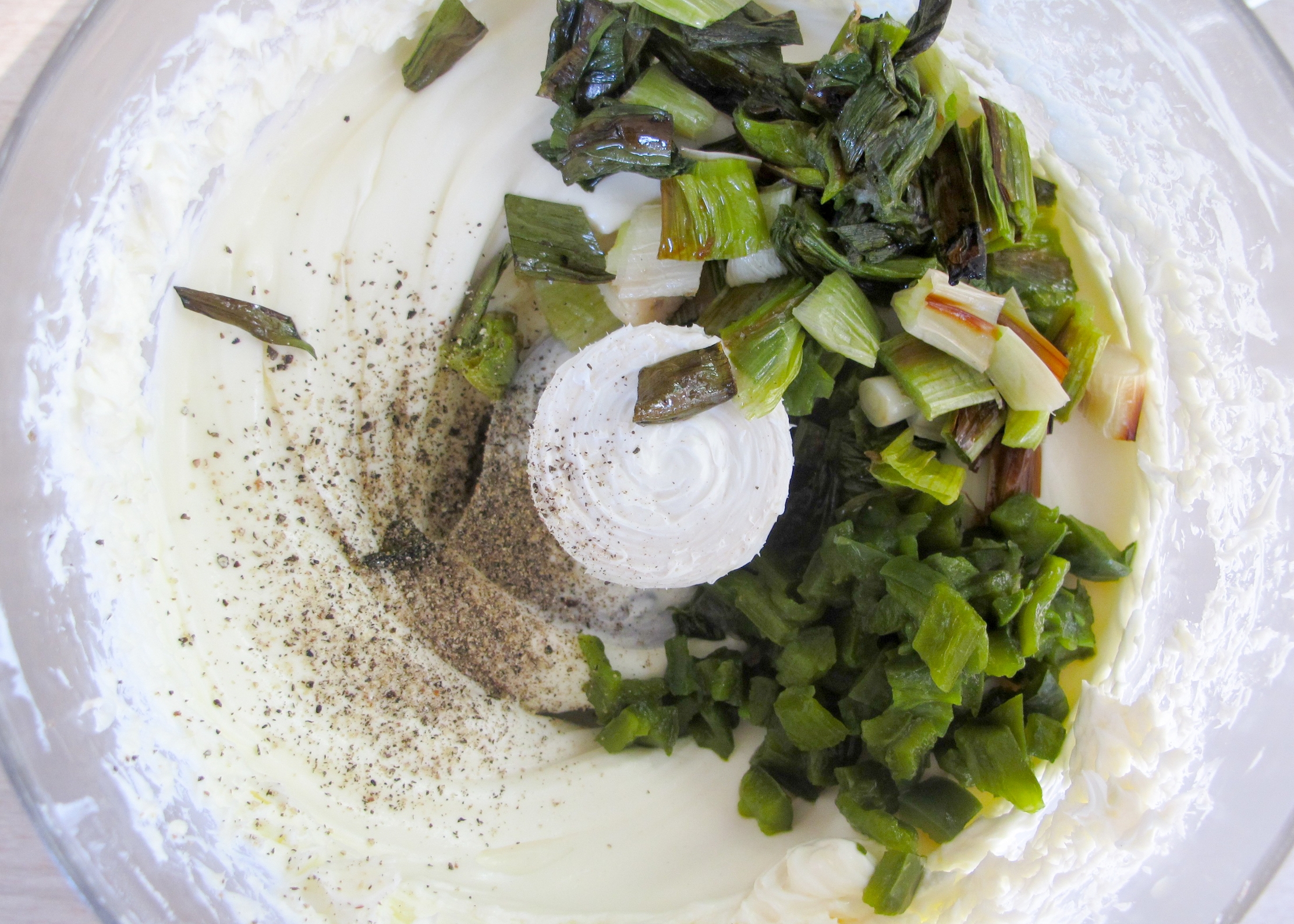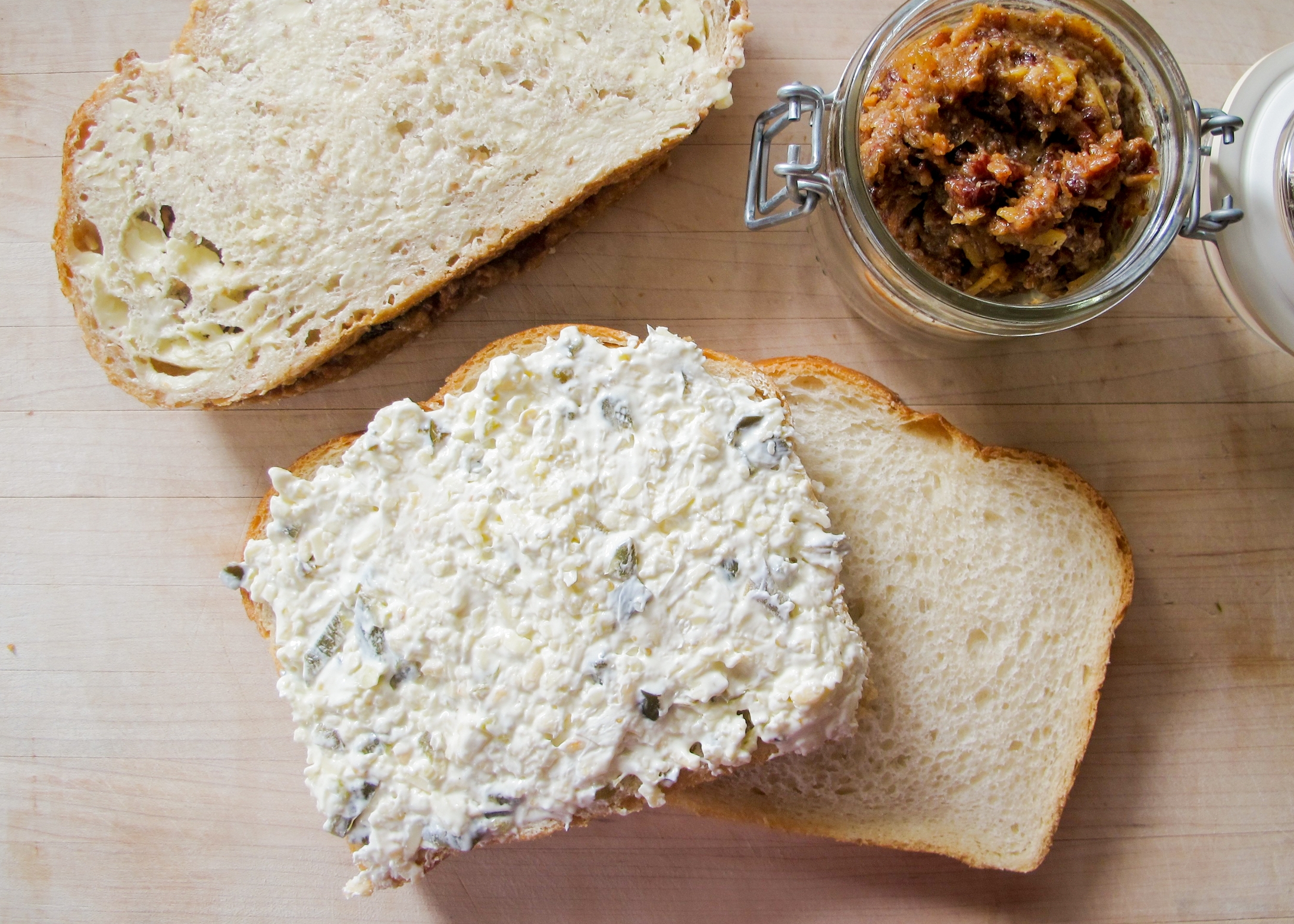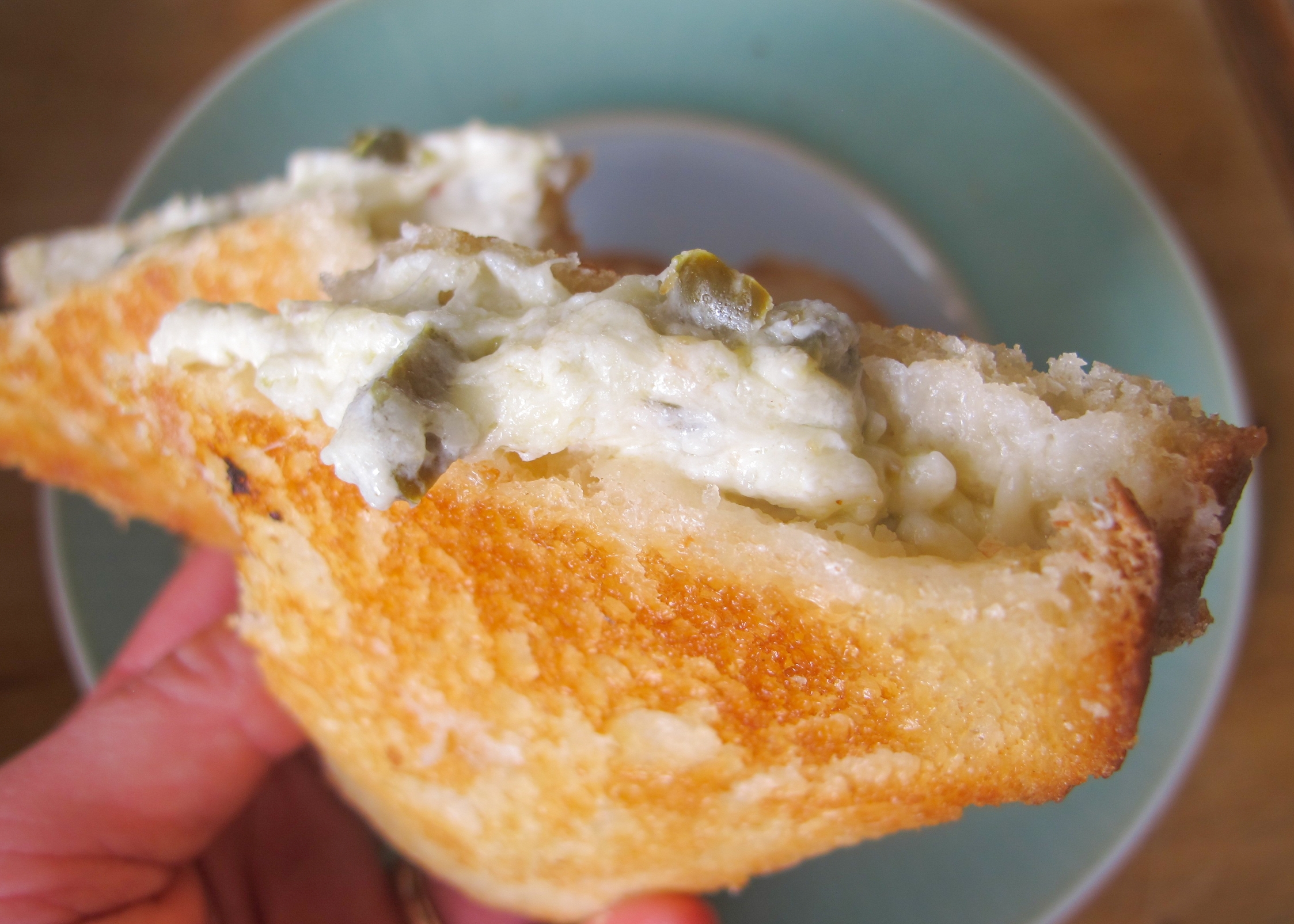Notes: This recipe is easily made vegan or vegetarian by omitting the bacon garnish.
Serves: 2-4
Time: 20 minutes
2 slices of bacon
1 tablespoon fermented bean paste (Korean dwen-jang is recommended but miso is fine, too.)
2 tablespoons gochujang (Korean fermented red pepper paste)
1 tablespoon soy sauce
1 tablespoon honey
1 tablespoon + 1 pinch gochugaru (Korean red pepper flakes)
1 teaspoon black pepper, coarse ground
1 teaspoon kosher salt
1/4 cup onion, small dice
3 medium cloves of garlic, sliced thin
14 oz firm tofu, cut into 1/2" cubes
1/3 cup water
1 tablespoon sesame seed oil
3 medium green onions
2 teaspoons rice wine vinegar
Slice bacon into lardons, place in nonstick skillet and cook on medium heat until crisp and fat is rendered- about 7 minutes.
Meanwhile, in a small bowl add: fermented bean paste, gochujang, soy sauce, honey, coarse black pepper and kosher salt. Stir to combine, set aside. Cut onion into a small dice, slice garlic, and cube tofu- set aside.
Once the bacon is cooked, drain on a paper towel and drain all but 1 tablespoon of bacon fat from the pan. On medium high heat, add the onion and garlic and sweat until translucent.
Add tofu to the pan and turn heat up to high, lightly frying the tofu in the bacon fat. Toss and brown until heated through- about 3 minutes. Add the spicy sauce and 1/3 cup of water to the tofu, stirring gently to prevent breaking up the tofu. Cook on high for 4-6 minutes until sauce has thickened and coated the tofu. Turn off heat and drizzle tofu with sesame oil.
Slice green onions on a bias and place in a small bowl. Dress the green onions with a pinch of gochugaru (red pepper flakes) and 2 teaspoons of rice wine vinegar.
Spoon tofu into a shallow bowl and garnish with dressed green onions and crisp bacon. Serve with white rice and devour immediately.






